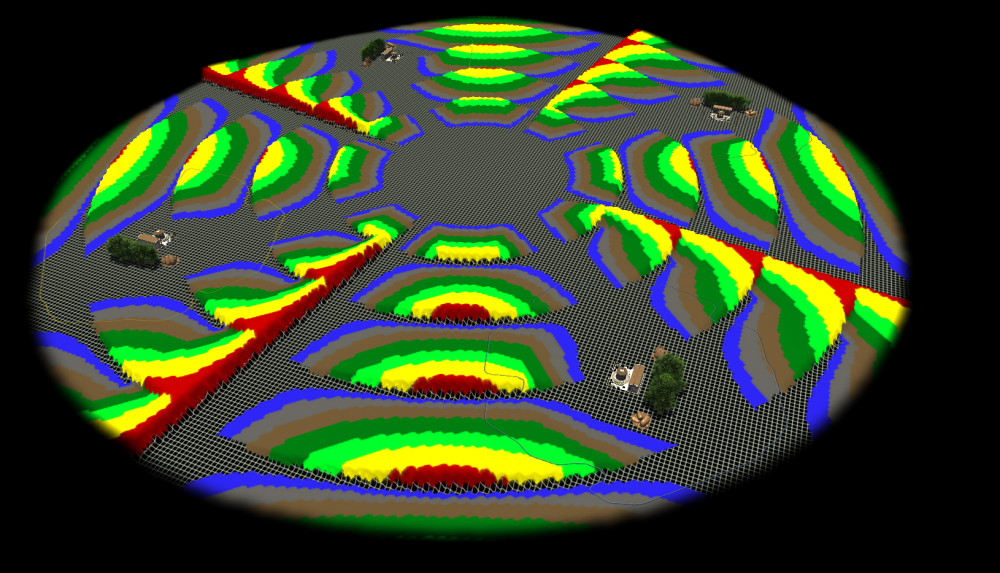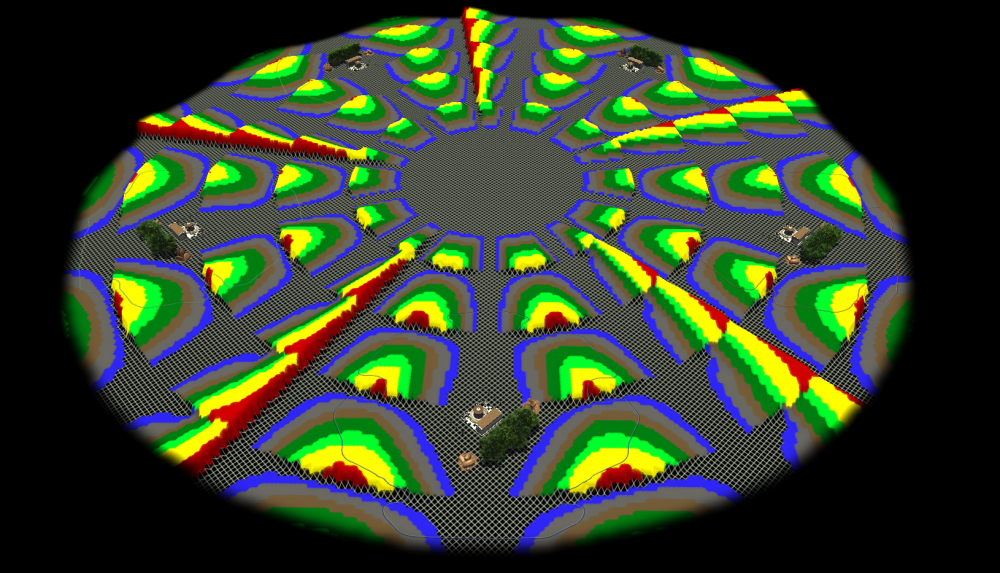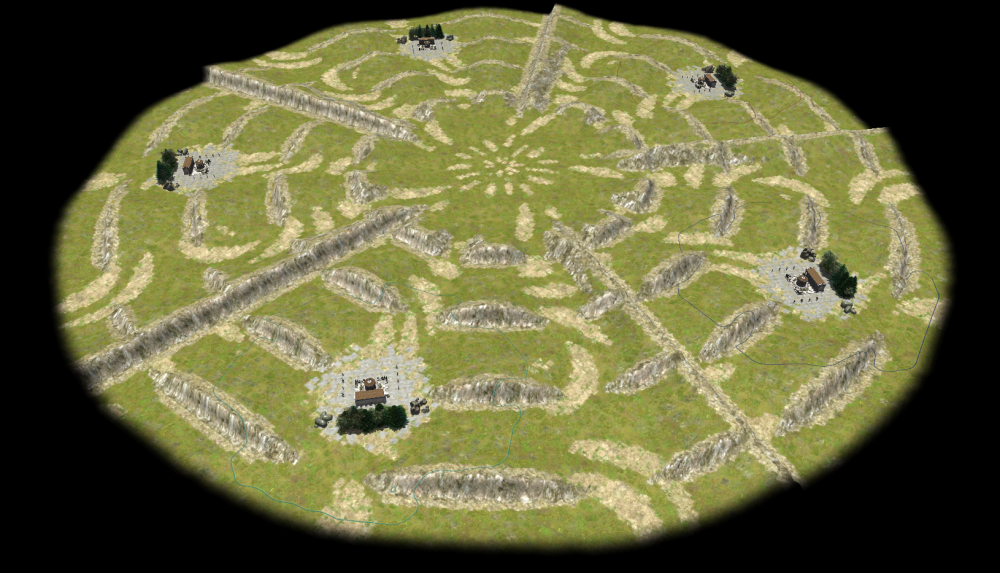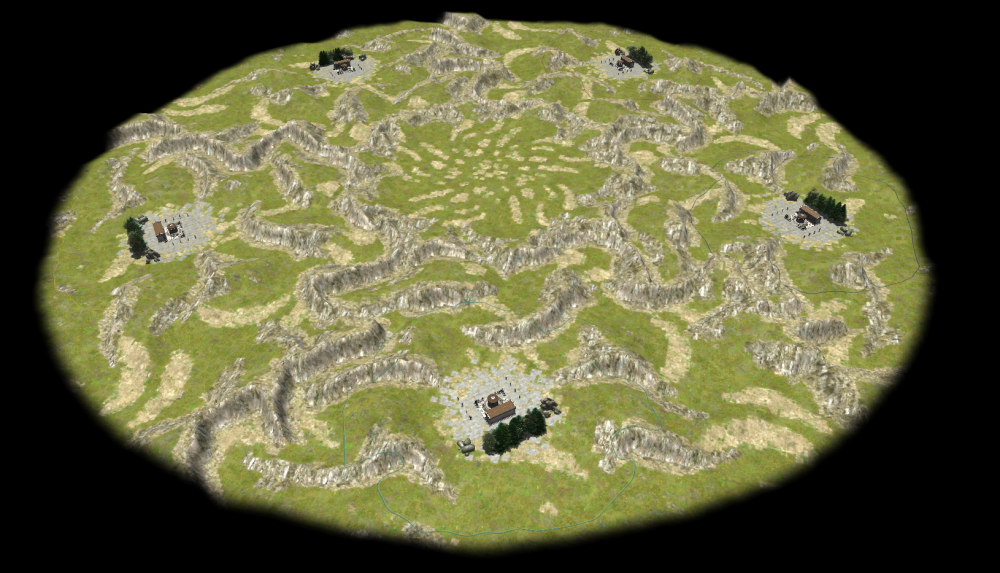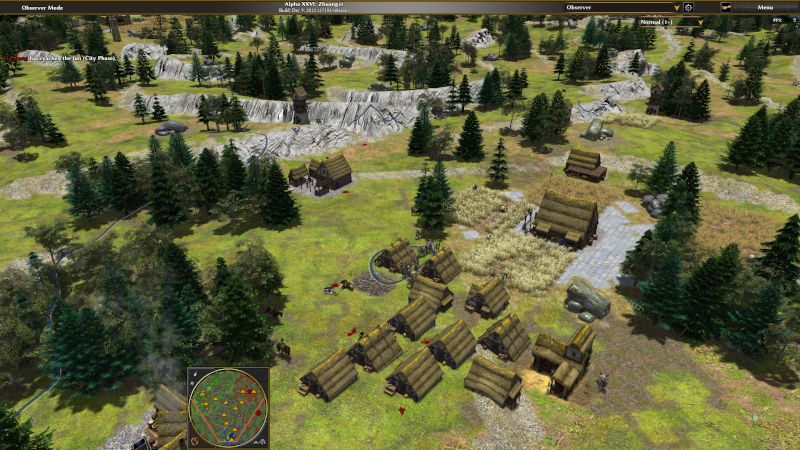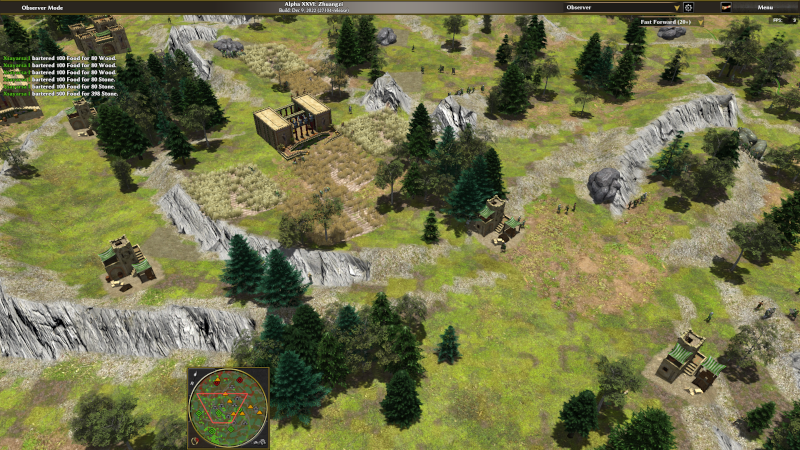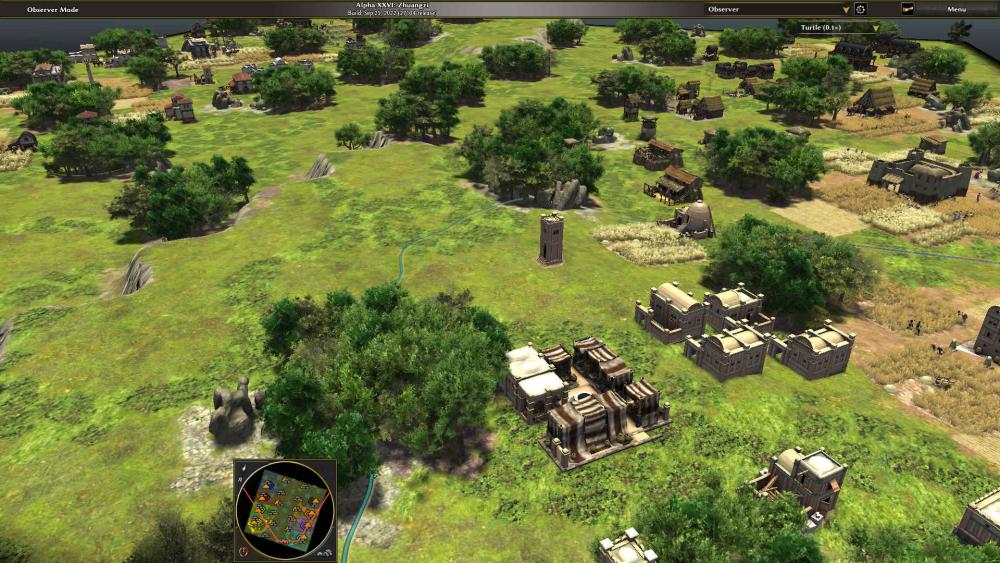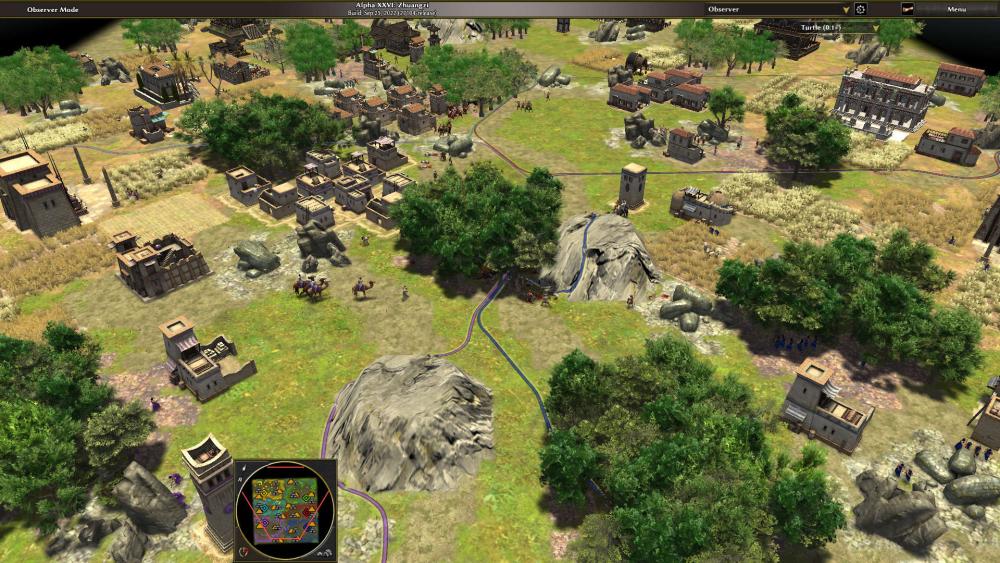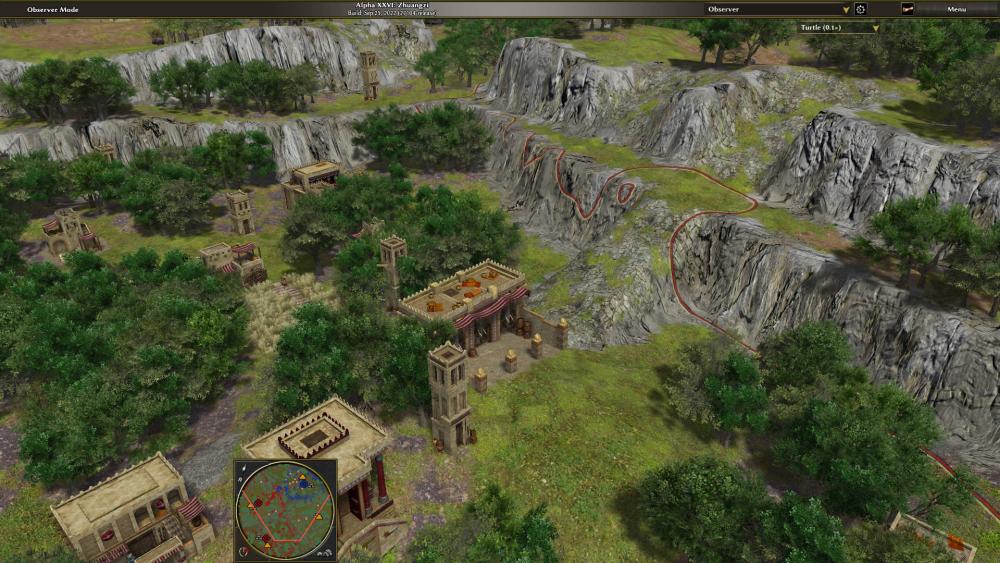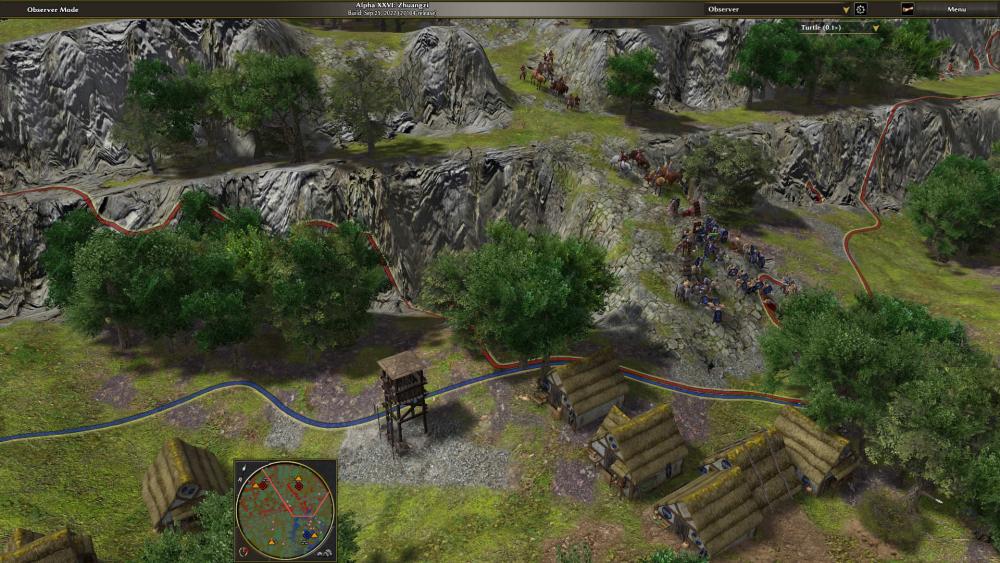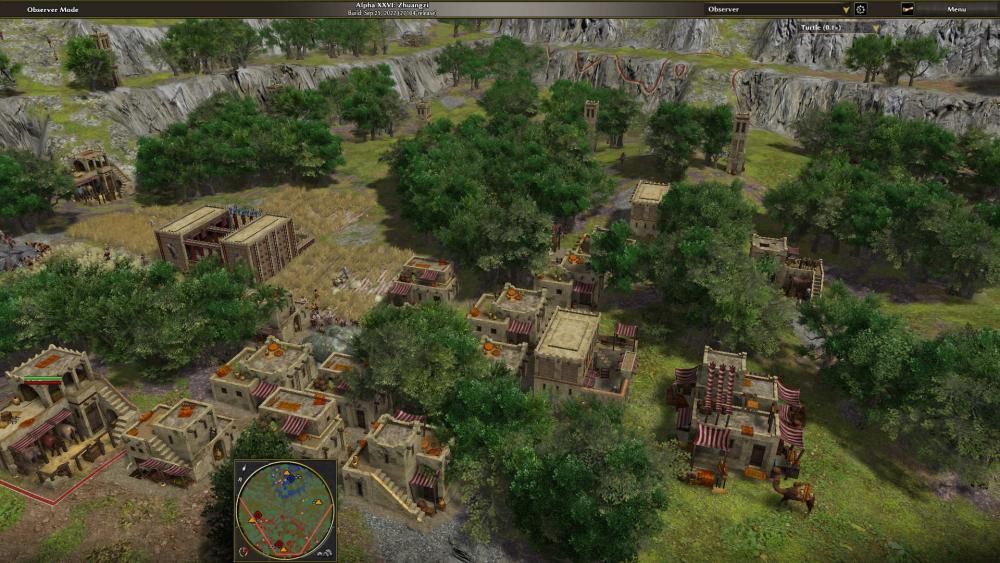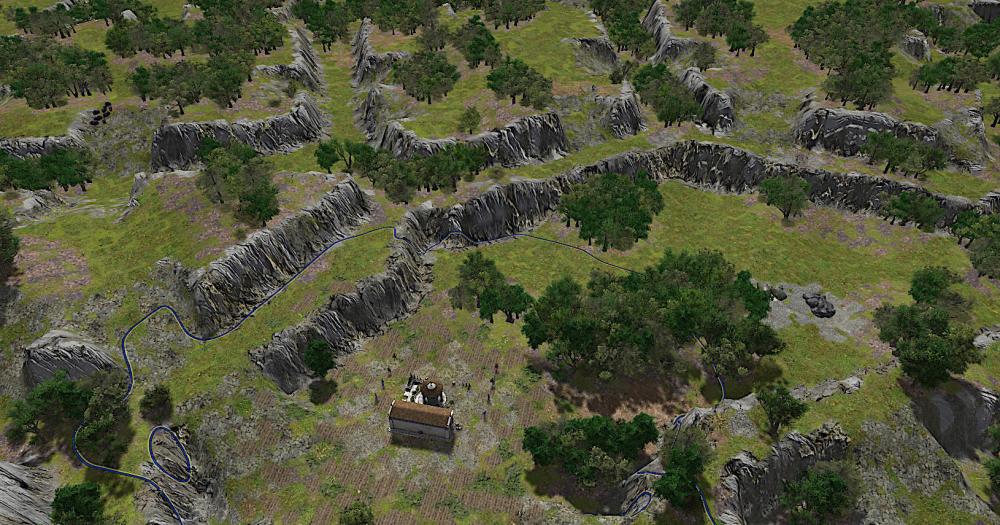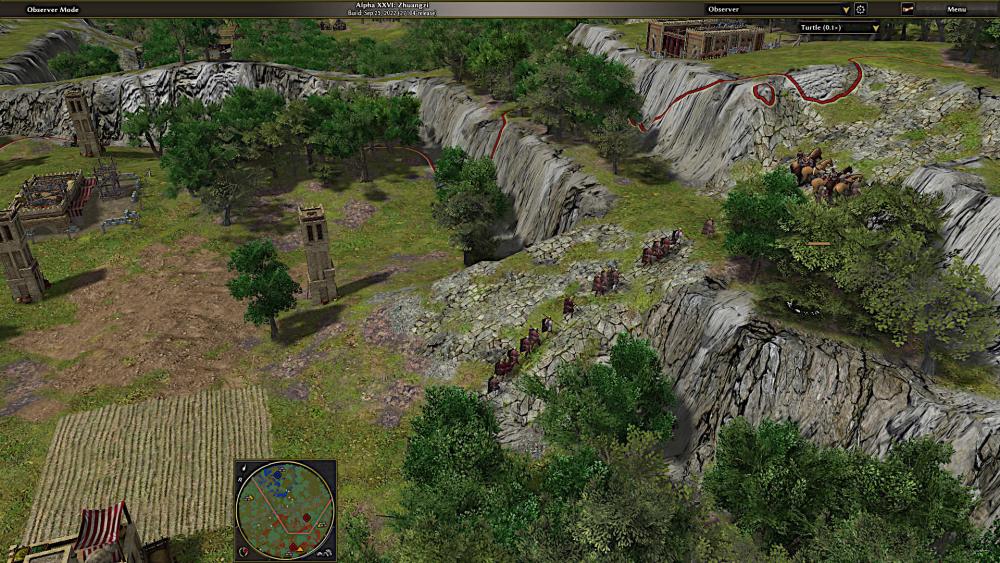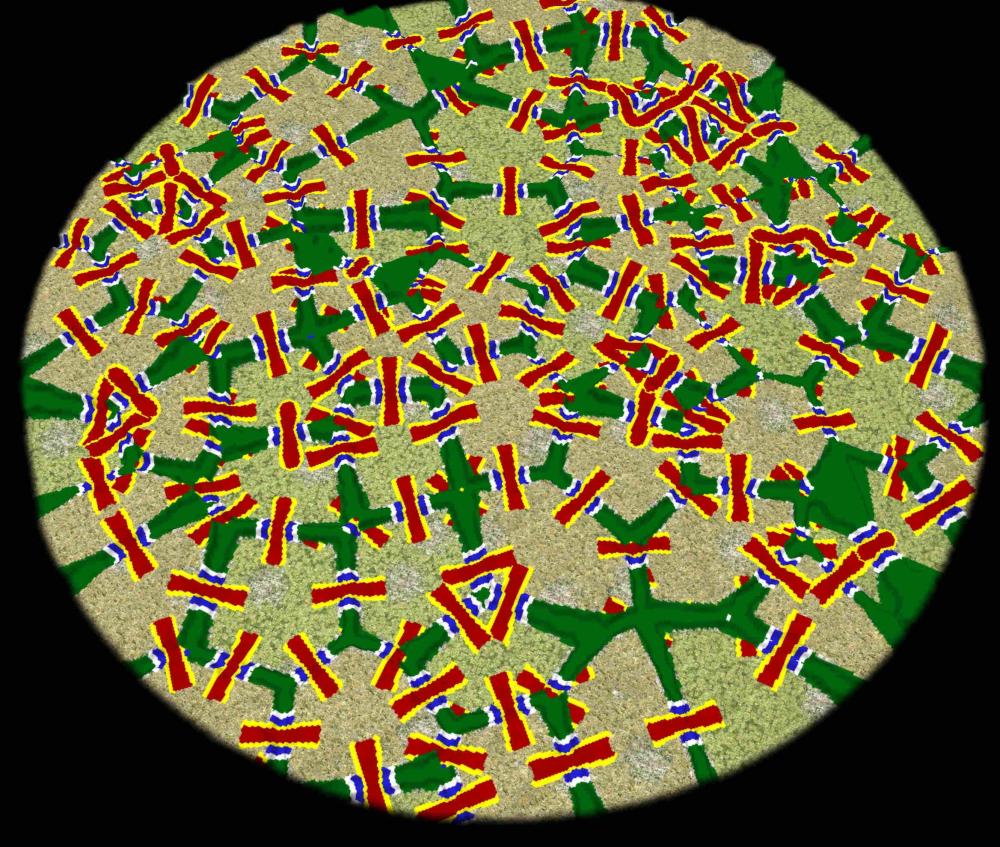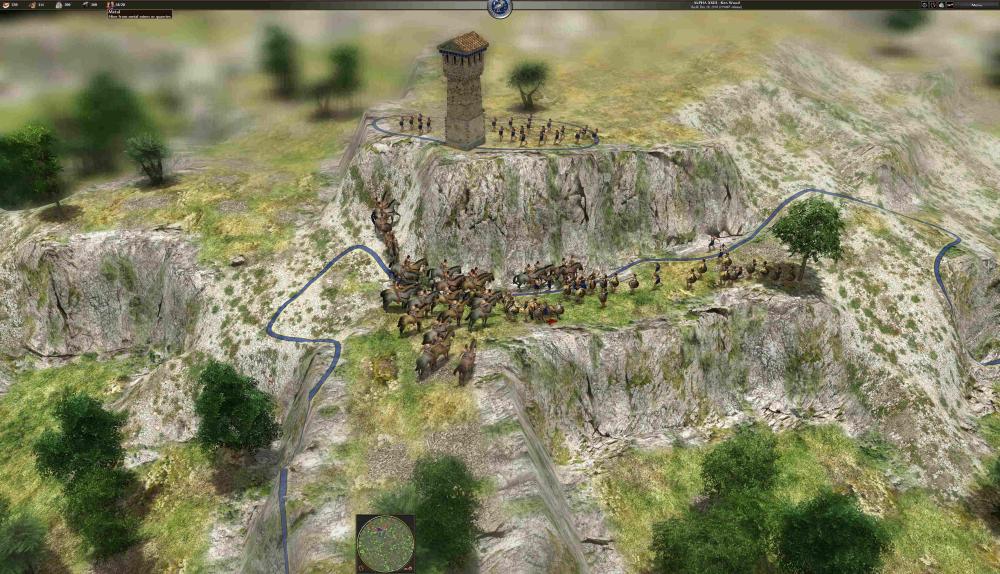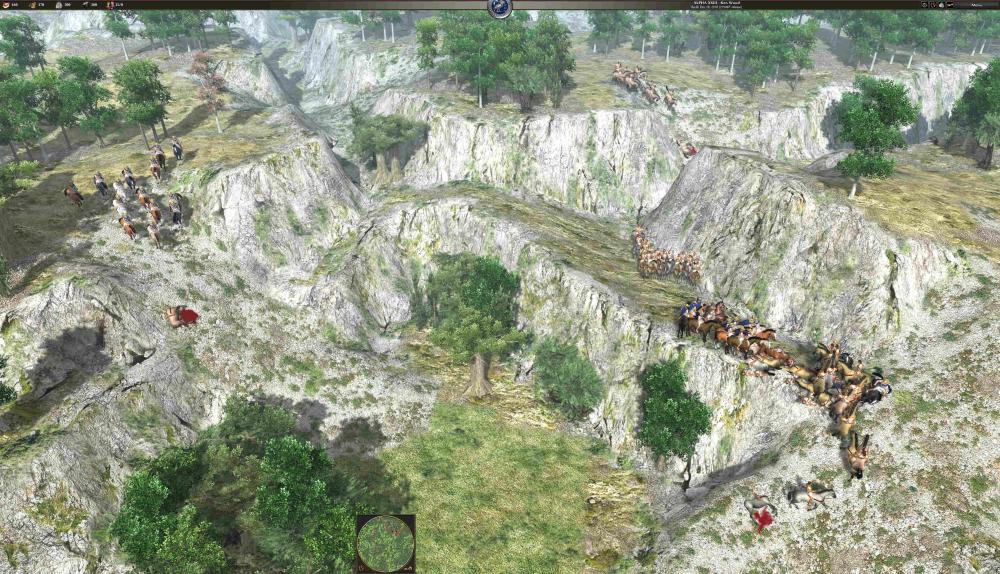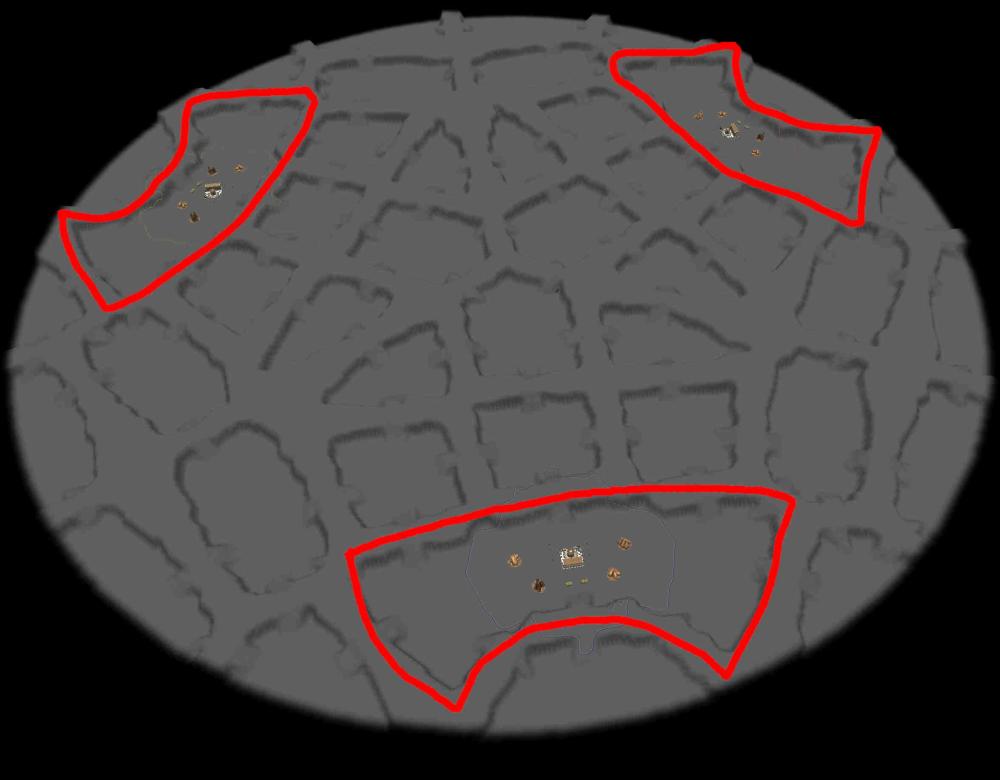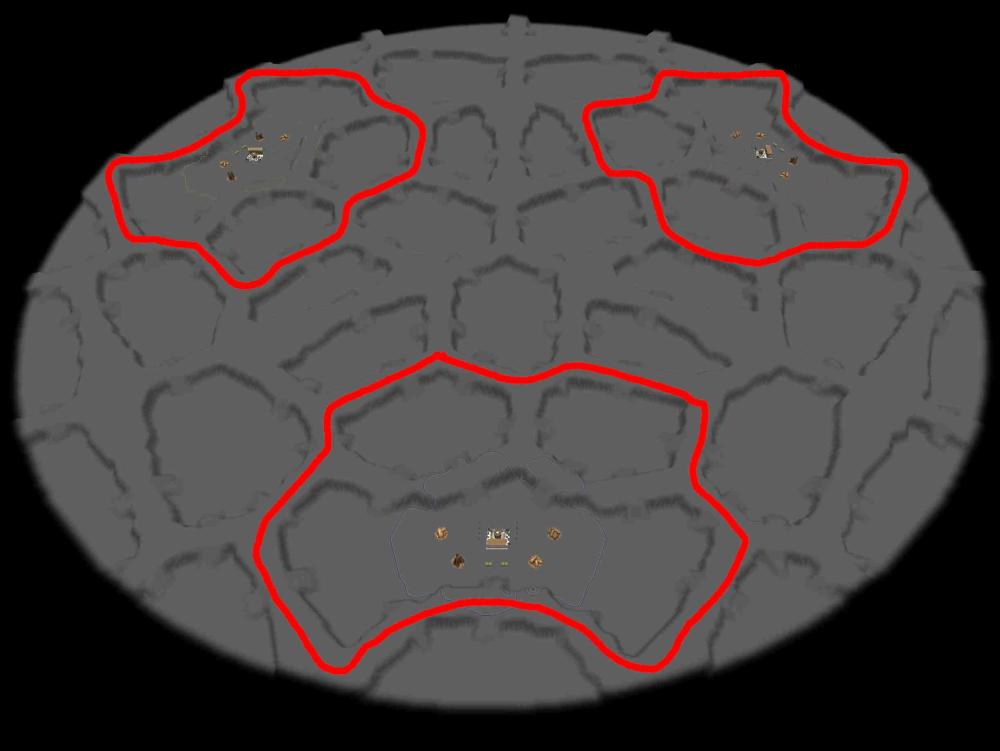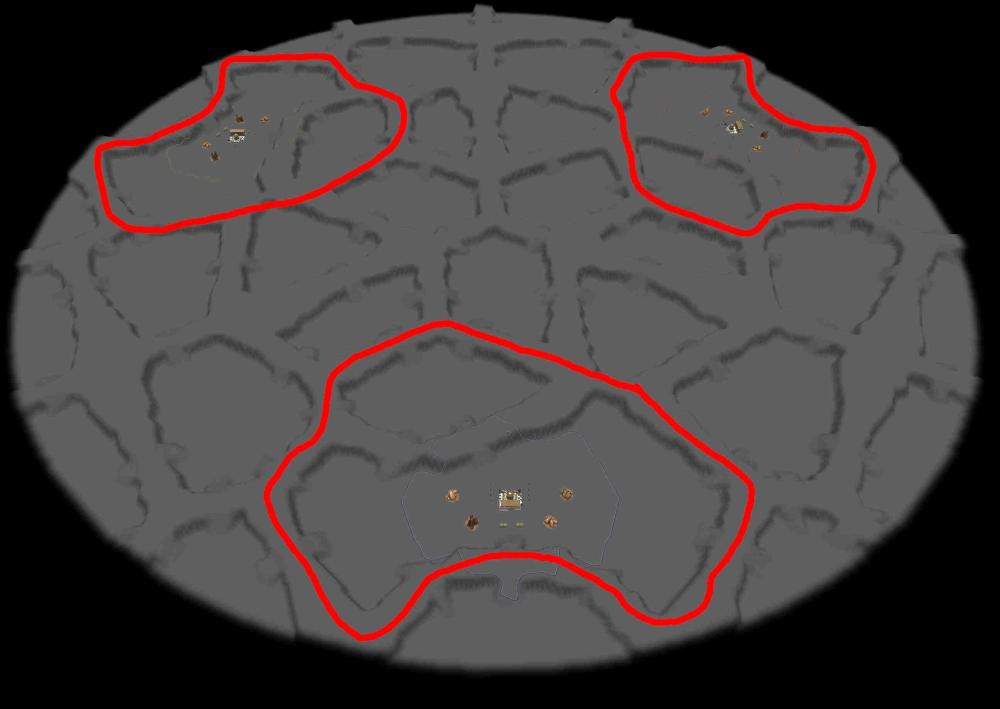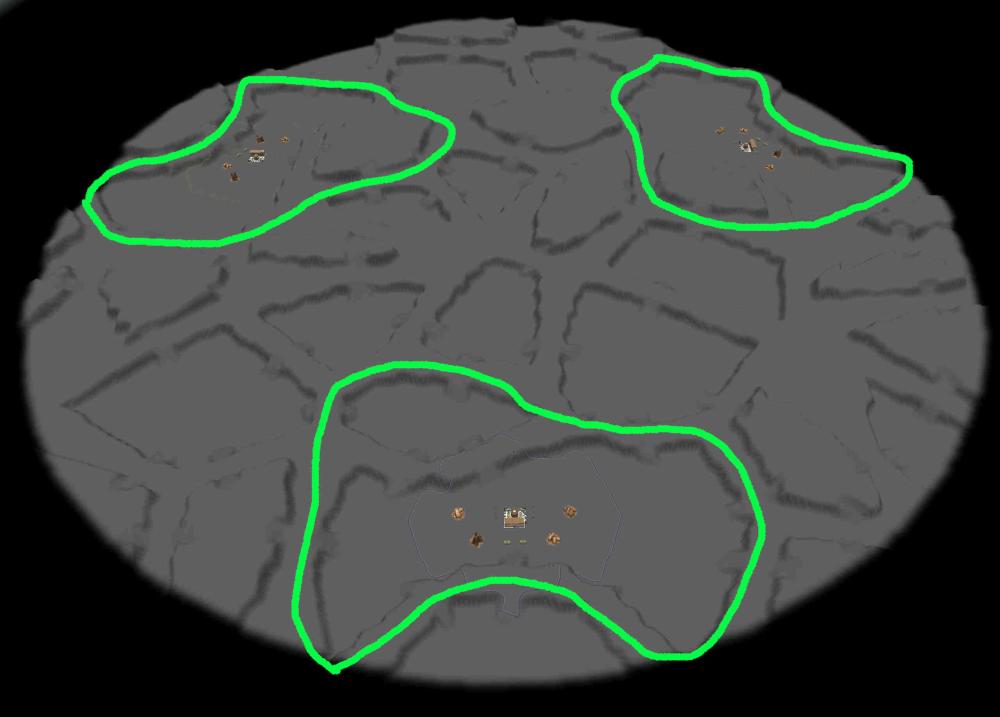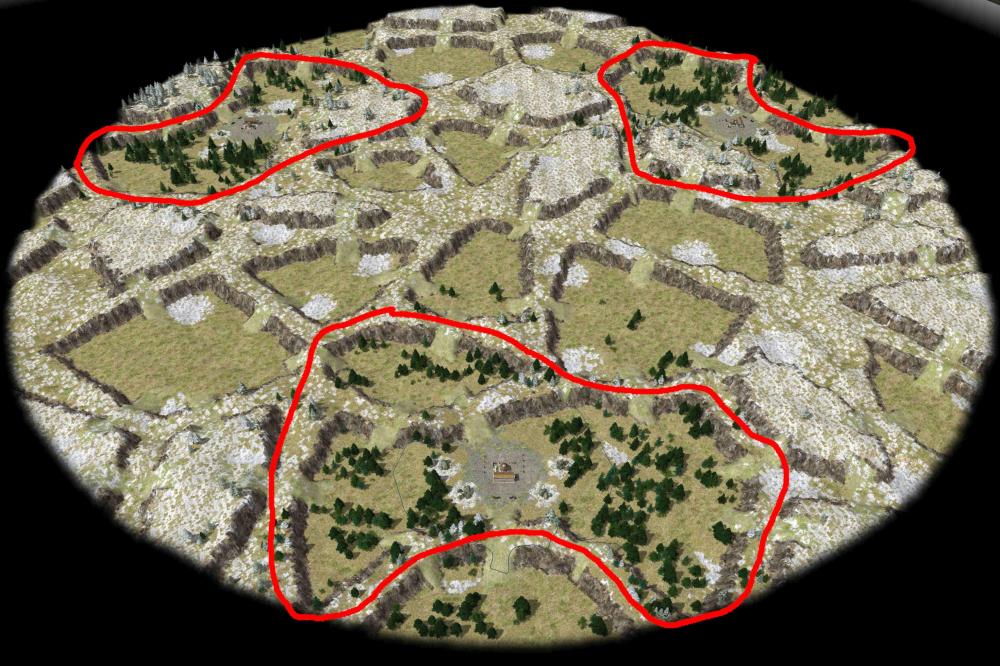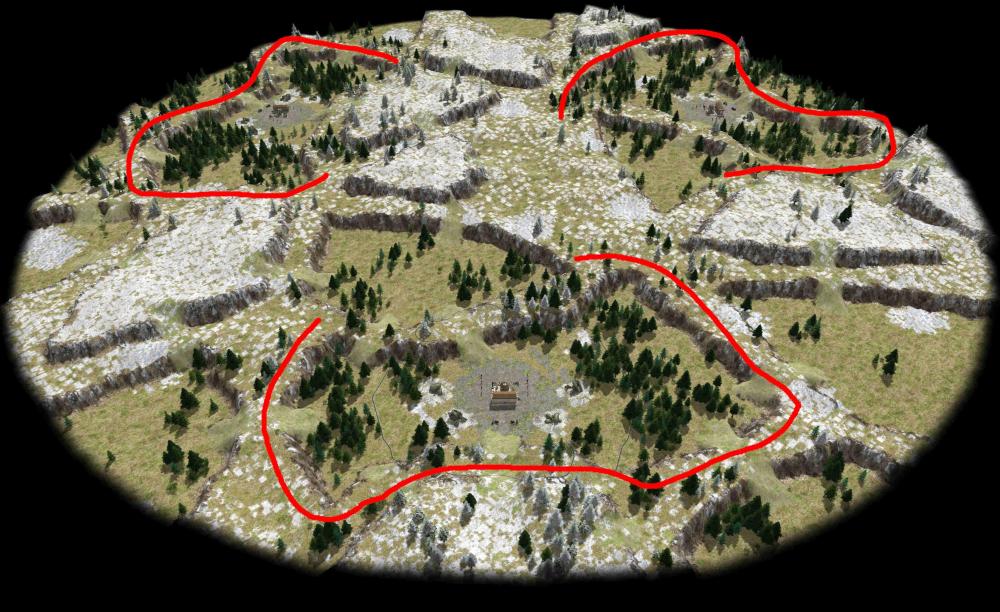
norjay
Community Members-
Posts
20 -
Joined
-
Last visited
-
Days Won
3
norjay last won the day on September 29 2024
norjay had the most liked content!
Recent Profile Visitors
The recent visitors block is disabled and is not being shown to other users.
norjay's Achievements

Discens (2/14)
50
Reputation
-
Two new maps, which are quite similar. I made the long cliffs more in a direction from center to edge, giving every player a pielike place, funneling all attacks through the center of the map. But bots can't handle this topographie very well. Even with an ensured path to everyone else, the often stand on the cliffs hurling missiles at each other. While citizen go on huge walks just to gather some resources just on the other side of the cliff. Also just one tower close to the edge of the cliff can deplete an entire economy, because the bots are just ignore them. And it seems sometimes warriors just stand around, just as they are stucked. Even a noob like me can win easily when exploiting these flaws. These maps may only work well with human players. The first map 'a' has longer cliffs inside the own territory, the map 'b' has an additional valley. Below you see an undistorted "heightmap" of 'a' and 'b'. This gives the basic idea of the map, since the distorsion will not change the logic, the pathes, that you can choose. Observe, that all maps are rotationally symmetric in nearly every aspect. The trees are randomly set, but in a determined area, which are again rotationally symmetric. Also the textures are randomly, but have determined areas for different sets of texture. Also every base have some starting resources, which are the same for every base (except the kind of tree is random, and the angle of the resources is random). The bases are aligned to the basic grid, that should make adding infrastructure more easy. With texture but without mines and forest the 'b' looks like this: with all the distorsion but without resources it looks like this. 20240928.zip
-
This is a new approach to map design, using algorithms to determine key elements. The topography, placement of towns, and locations of mines are dictated by mathematical functions, while textures and trees exhibit only minimal randomness. The randomness is largely restricted to the parameters of these functions, allowing for controlled variability. A major advantage of this approach is that it enables the creation of very large-scale structures, particularly long cliffs. I focused on several key aspects: map generation should be fast, the topography should present a challenge, and the entire terrain should be accessible with minimal wasted space. Additionally, each player should have an equally balanced environment, which is why the terrain is rotationally symmetric. The topography consists entirely of cliffs, each with a steep side and a gentle slope. As a result, there are no prominent mountains, and the overall height profile remains uniform. My goal is to define maps based on the length of cliffs, the asperity (the distance between cliffs), and the number of directional changes. I also want to create distinct areas with varying asperity, such as plains and valleys compared to more rugged regions. I've attached a first test version of the map and would love for you to give it a try. While I've already tested to ensure that the bots navigate without getting stuck, I’m relatively new to this kind map design and haven't played 0 A.D. for over a year. As a result, I may not be the best judge of whether the map is truly engaging or balanced. That’s where you come in! Your experience and feedback would be invaluable in refining the map. I’m eager to hear your thoughts on how it plays and whether it offers a fun and challenging experience. proc20240927a.zip proc20240927a.zip
-
finally finished this map should be very balanced for two parties with several players. Also it should be fine for 8 players on a tiny map. it is not totally plain, the fields from the two parties are separated by a cliff, only in the center of the map both parties can meet. The next maps will also have very simple ridges which will reflect on the center of the map. Like hazards on a golf course. But i am a little out of ideas. reflect.zip
-
early stage of a two-party map, should be playable in all sizes, and all combinations 1 vs 1, 2 vs 2, 3 vs 3 and 4 vs 4. The map should be balanced, mines and obstacles are mirrored at the center. Every base has a stone and metall mine in close proximity and some bushes of berries. Between the player of the same party there are no obstacles. Additional Mines are evenly distributed. There are a lot of parameters in this map, i can change, like: average distance between groups of trees amount of trees in a group size of a group of trees, either they are all in a small spot, or they are more widely distributed number of additional mines distance between the players additional hills reflect.zip
-
So the basic requirements are: the map is for two parties, every party has several members between the members there are no obstacles, members should have easy access to the area of other members of the same party. Maybe the members of the same party are some more closer to each other than they are to members of other parties. there is a strict setting of resources in the proximity of every base, for example there should always be a stone and metal mine behind the base and 8 bushes of berries in front of the base, no trees in the proximity of 8 fields, but 200 trees in the proximity of 16 fields to the base. should there be natural obstacles between opposing parties, dense forests, water, ridges, everything combined ? what about additional resources ? How many additional mines should there be for every party ?
-
@andy5995 How do you test that ? That would be something i would like to do too, just to see how the opponent build up their base. do you make all player to be opponents and watch how they play against each other ? or do make them all allies and watch how the populate the area ? The map seems to be very small for so many players, doesn't that affect the willingness to spread ?, at least a lot of them seem to have a build a second town-center.
-
Two observation i made by playing against the computer or watching replays: no one uses defensive structures. I would really like to see some replays, where someone builds walls and put it to a good use. a lot of games are decided very early. Often one single successful rush attack can define the whole game. Once the infrastructure have taken some damage, the defender remains on the back foot. Especially when i play against the computer, once i gained upper hand, the rest of the game is just mopping up. I really wanted something to make a game more challenging, even if i am in a superior position. And i want walls and palisades. For most random maps there simply seems no use for defensive structures. Maybe this map only works against the computer-opponent, because the computer never walls himself in.
-
amantia.zipNew Map And this more hardcore than the previous maps. I sat down this weekend and fiddled with the algorithms for ramps and rims, and made the terrain even more ragged than before. Ramps are now smaller and more reliable, though, not all ramps will be fully passable, a tradeoff to have a parametric map with a certain amount of randomness. The rims are also narrower and make the passage of large troops more challenging. You should be able to play every size of map with any amount of players. The terrain around the all bases should always have the same conditions for every player. Of course eight players on a tiny map will not be that interesting. I only played against the machine, i was able to win on a small map, but so far lost all games on a medium map. Up to now i didn't try any larger maps. amantia.zip
-
Finished another map. These maps are just a little bit random. Much of the structure around the base will always look the same. Just the trees and textures will always be random. For the structures more remote from the base the degree of randomness increases. Maps will look different with different maps-sizes and numbers of players. The idea is to have a map like those in starcraft, with a conversant terrain. But for all kind of sizes and numbers of players. Like always, the map has a lot of ramps. So can make very good use of chokepoints. The small map for two players is really fun. moravia.zipmoravia.zip moravia.zip
-
This is an adapted map, this time for Version 25. I have used a new system, that produces deterministic areas for a base, and turn to random terrain outside the base. In the multiplayer-mode all bases should have the same terrain, the location of the mines are also on the same place. Same applies to fauna like muskoxes and wolves, they are at predetermined locations.carpathian_2.zip Just the trees and textures are always random. For different sizes of maps and amount of players i have made several predetermined terrains, more complex one, if the size of the map is sufficient. carpathian_2.zip
-
Some seeds do create valleys without an exit. This devaluates the whole map. The whole system of ramps on this map is not reliable enough. Although in my tests there was always a way to leave the initial valley. The only way to fix this fast is to make the valleys bigger and less random. But this would make the maps also less interesting. That's why i remade the algorithm. The new map is under the topic "fair multiplayer random map". Because of the new map-generator i have decided not to maintain this map anymore. Instead i will create a new map with the same name, and very similar features.
-
I have remade the system to be more reliable, starting with giving every player a customized starting area, which should make the surrounding area more reproductible. I would really recommend this map, the ramps to the different levels are much smaller and cramped, but much more likely to be traversable. The new map-generator is linked down below. And for fixing the map "Carpathian", at line 16 is a variable distHill = 45 increasing the variable makes the valley larger, and also make the ramps more likely to go all the way down and up to the plateaus and valleys. The variable distHill is the amount of fields, every structure (valley/hill) is separated from each other. The variable randHillMax = 12 is an random displacement. Reducing the value reduces the amount of awkward geological features like cut of valley. Reducing it to zero makes the whole topology look like honeycombs.
-
Let's get it done, my first attempt. But at first i have to apologize, i still have Version 23 (due to a very old computer), so someone have to bring the textures and objects up to the actual version. They all start at line 200 (the texture section) of the code. And i really don't mind what textures you use, as long as it looks cool to you. For the textures, many of them have are set textures for low and high altitudes, it should be easily recognizable by the name. Also the trees are chosen by the altitude of the terrain. My originally idea was to use snow covered high peaks with pines on the low ground, and snow covered pines on the high ground. So what is this map about. I can define a topography that will be the same for every player in every game. But i can also use elements in this topography that can have a certain amount of randomness. I can define the location of the civil-center and the mines. All this is applied to every player, and should produce a similar environment. If the map is bigger than the defined topography, additional topography is added to fill the map up. Summarized, this map is a mix of scenario and random. It can be adapted to different sizes and amount of players. Of course, if you choose a very small map for many players, it still may look very bland. The map gets interesting at medium size. I have several time tried and failed to win against the computer as opponent in the medium size. So i really want to know, is the map at medium size really challenging to play ? ovara.zip
-
You mean "remove some ramps", so that archers and towers can punish melee troups without retaliation ? This is possible, you can create cells without ramps and connect them to cells with ramps, this makes long cliffs, with few accesses. But in the random-mode make these cliffs rather short, the map mostly are not big enough for long cliffs, especially with more than two players. Does it make a difference, if you shoot an arrow down or up ? For defense tower there does not seem to be an altitude-bonus. This picture below visualizes a little bit, how these maps are set up. The green areas are the cliffs, that should restrict the movements. The red stripes are passages over these cliffs. The passages look plentiful, but i assume, you have only 15-20% of passable way compared to a open terrain, and that makes already an huge difference. At the moment i really try to make the topography as ragged as possible. I hope i get a good first try published this week. For the maps you can chose different biomes, but you can also set up different outlays for the bases. Does this count as a different map ? Here some actual Screenshots. Already with the more ragged terrain. These narrow passages have some resemblance of "the brave 300".
-
The next step is to redesign the areas around the base. The topographic cells are to compressed, i want more space. So i put up in the map-description language an character (exclamation point), that connect cells to the cell of the base. I put this char exactly at the location of the default-hill. I could also overwrite the hill with some char and put the cell somewhere close. But there should always be some distance between the topographic features. The description of the map now looks like this: setMap(["", "", "", "", "", "", "!....A....!"]); And the result now looks like this: Again, up to now, for all players the topography is the same. Next, i want to reduce the amounts of cell before me, at the moment there are three cells, i just want two, and i want them not to be aligned to my base. For the description i added the dot to erase any topographic feature, that was set by default, and a "X" to set a new cell. The description now looks like that: setMap(["", "", "", "", "", "", "!....A....!", "", "", "", "", ".....X.....X......."] and the map looks like that: Now i make a little alteration, i will only put one hill in front of my base. The small "x" is like the big "X", but it will not get randomly displaced. setMap(["", "x", "", "", "", "", "!....A....!", "", "", "", "", "...........x......."] ); The result looks like that: Now i apply the random displacement to the cells: The cells now are lowered or raised plateaus, except the cells, that belong to the base - they are always lowered. For the accessibility there is no difference, if the plateau is raised or lowered, the ramps to the plateaus are either go up or down. Also, while the default cells are randomly displaced, the cells set by the discription-array are not. Of course you can create cells, that are displaced. But for this example i wanted to be the cells in the immediate surrounding of the base all to be fixed. The last step for now is texture and trees. And this is, what the "normal"-sized map for three players look like: Just for the observation, i have limited the trees to the proximity of the base - i have an old computer, and i utilize everything to reduce lag. But there is also a character for Cells with a forest. And this is what a map of the "medium" size looks like. Parts of the element described in the array are missing. So this map is already to small. Still you get a nice map, and still it is fair to all players.

